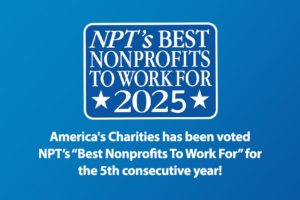Charisse R. Browner, C.G.S. | June 30, 2016
Recruitment and Retention: It’s About More Than Your Bottom-Line
“I don’t like my job.” That’s how many employees may feel according to a Gallup survey that states less than one-third (31.5%) of U.S. workers were engaged in their jobs in 2014. Gallup defines engaged employees as those who are involved in, enthusiastic about and committed to their work and workplace. It’s easy to say that the average employee has felt apathy about his job at one time or another. Personally I don’t believe that I fall within the 68.5% of un-engaged workers. That would make me average – and I’m not. Frankly, your employees aren’t average either. What does “average” really mean anyway? Merriam-Webster states it is a ratio expressing the average performance especially of an athletic team or an athlete computed according to the number of opportunities for successful performance. This lends itself to a perfect example of why being above average for both employee and employer is important for retention and recruitment.
 I am an athlete. I constantly focus on improving my cycling time and ability on the Velodrome track. And I know my chance of success, my ability to be above average, comes from the number of opportunities I have to train and improve my time. It’s exactly the same for your employees. No one wants to be average. The opportunities you create through your social responsibility and employee engagement program directly link to your employees’ successful performance – and therefore their company’s bottom-line.
I am an athlete. I constantly focus on improving my cycling time and ability on the Velodrome track. And I know my chance of success, my ability to be above average, comes from the number of opportunities I have to train and improve my time. It’s exactly the same for your employees. No one wants to be average. The opportunities you create through your social responsibility and employee engagement program directly link to your employees’ successful performance – and therefore their company’s bottom-line.
The opportunities you create through your social responsibility and employee engagement program directly link to your employees’ successful performance – and therefore their company’s bottom-line.
Offering these type of opportunities go far beyond providing useful tools to get the job done. It includes incorporating opportunities for employees to grow intellectually and offering various methods for them to feed their soul at the workplace. What does this have to do with who you attract and retain – and ultimately job performance? A lot!
Why Corporate Social Responsibility (CSR) and Employee Engagement Opportunities Matter
With 24 hours in a day, a third of that time is spent on the job (even more if overtime is a regular part of the work week). Today’s employees are looking for work that means something more – they want to be employed by a company that has strong values and clear CSR commitments.
According to the 2016 Cone Communications Employee Engagement Study, “a company’s social and environmental commitments are key drivers in recruitment, retention and loyalty for today’s workforce.” Nearly three-quarters (74%) of employees say their job is more fulfilling when they are provided with opportunities to make a positive impact on social and environmental issues – and seven in 10 (70%) would be more loyal to a company that helps them contribute to important issues. Corporate social responsibility is also a significant consideration for candidates when deciding which job to take.
High-performing CSR leaders know that social responsibility and employee engagement programs help recruitment and retention efforts. We surveyed corporate practitioners and the findings, detailed in our recent report, Snapshot 2015 – The New Corporate DNA: Where Employee Engagement and Social Impact Converge, uncovered that companies — like our clients, our partner Brixio and other leading organizations — use employee engagement tactics specifically to attract and retain the best of the best. According to the companies that responded to our Snapshot 2015 report:
88% believe effective employee engagement programs help attract and retain employees.
- 77% believe that offering employee engagement opportunities is an important recruitment strategy to attract millennials.
- 73% believe offering employee engagement opportunities is an important retention strategy for their company.
- 70% strongly agree that employees expect them to be a socially responsible company.
There is truth in numbers. This Snapshot 2015 data, simply put, means employers who want to be competitive in the marketplace understand their brand’s strength, reputation, and business success starts with their workforce. Businesses that excel start with a strong recruitment and retention strategies – and a cornerstone of those strategies are employees’ opportunities to improve their communities and the lives of others. These opportunities help your employees feel more connected to their work and to their company.
Getting Started
What type of opportunities can employers offer employees? Volunteering, giving to nonprofits through recurring payroll deductions, in-kind and skills-based giving, and crowdfunding, to name a few. Employers should support their employees’ efforts with a matching gift program or one where a portion of business revenue is donated to support a cause (or multiple causes). The more options made available, the higher chance of recruiting better candidates and keeping them happy. The goal is to help ensure employees are above average and never utter those insipid words: “I don’t like my job.”
For more information on how America’s Charities works with employers to help provide opportunities for successful performance, please contact us. And for some additional tips on creating a culture of social purpose with big impact on employee retention, read our partner Causecast’s eBook, The C: How

Get Resources and Insights Straight To Your Inbox
Explore More Articles
For Fifth Consecutive Year America’s Charities Named ‘Best Nonprofit To Work For’
Washington, D.C. – April 1, 2025 – America’s Charities, the nonprofit that mobilizes the power of giving as a leading provider of volunteering, workplace giving,…
Read ArticleWorkplace Fundraising + Volunteering Summit (April 2nd and 3rd, 2025)
Join us in attending this virtual summit! The America’s Charities team is joining up with other leading voices in the workplace giving space for a…
Read ArticleThe Time to Act is Now
The results of the 2024 National Assessment of Educational Progress (NAEP) are in, and the findings are, in a word, heartbreaking. This assessment serves as…
Read ArticleGet Resources and Insights Straight To Your Inbox
Receive our monthly/bi-monthly newsletter filled with information about causes, nonprofit impact, and topics important for corporate social responsibility and employee engagement professionals, including disaster response, workplace giving, matching gifts, employee assistance funds, volunteering, scholarship award program management, grantmaking, and other philanthropic initiatives.





